Wednesday, March 14, 2012
1932-33 Chicago Black Hawks Paul Thompson Jersey
Tommy Gorman was the youngest member of the Canadian lacrosse team that won he gold medal in the 1908 Summer Olympics. He subsequently played professionally before becoming first a sport writer, and then editor for the Ottawa Citizen newspaper until 1921.
While he still worked at the Citizen, Gorman was recruited by Ted Dey, owner of the Ottawa Senators of the National Hockey Association to help him recruit players, which he did so well he was hired as the club's secretary-treasurer.
Due to ongoing difficulties with Eddie Livingstone, owner of the Toronto franchise in the NHA, Gorman who was now manager and part owner of the Senators, George Kennedy (owner of the Montreal Canadiens), Sam Lichtenhein (Montreal Wanderers) and Mike Quinn (Quebec Bulldogs) all hatched a plan to suspend the NHA and a week later reform as the National Hockey League in a not very transparent effort to rid themselves of Livingstone.
Gorman was quoted as saying at the time, "Now that we got rid of Livingstone, we cant get down to the business of making money."
The Senators proceeded to win the Stanley Cup in 1920, 1921 and 1923 before Gorman sold his interest in the Ottawa franchise and became the manager-coach of the expansion New York Americans in 1925.
The 1922-23 Ottawa Senators
He remained with the Americans until 1929 when he resigned and became involved in horse racing, including owning the notable horse Phar Lap.
He remained in the horse racing world until the racetrack where he worked was sold in 1932. He returned to the NHL midway during the 1932-33 season when he was hired as the new coach of the Chicago Black Hawks following Emil Iverson, who coached the club for 21 games, and Godfrey Matheson, who was at the helm for just two losses.
He took over the helm o January 15th with the club sitting at 8-9-6. Following a loss in his debut, things began to turn around for the Black Hawks, who won four of their next six games, followed by a pair of ties to improve to 12-12-8. Two losses, two wins and two ties came in succession before a pair of losses closed out February.
March began with a win over Gorman's former club the Americans, followed by a loss to Toronto and a win and tie against Ottawa. The Maroons defeated Chicago on March 11th to bring them to their next game on this date in 1933 against the Bruins in Boston.
With the game having reached overtime, Marty Barry had scored for Boston giving them a 3-2 lead (overtime was played to full time in those days, and not sudden death) and Gorman objected. His argument with referee Bill Stewart became so heated that Gorman eventually punched Stewart, who reportedly landed a few blows of his own before he called the police to have Gorman ejected! The Black Hawks players left the ice in protest, which led to the game being ruled a forfeit in favor of Boston, the first forfeit in NHL history and one of only two in it's 95 year history, the other being the Richard Riot in 1955.
While the Black Hawks would finish last in the American Division and out of the playoffs in 1933, they would rise to second in the division in 1933-34 and qualify for the postseason. They would defeat the Canadiens 4 goals to 3 in their two game, total goals series. The Maroons would fall next 6 goals to 2 before Chicago would win the first Stanley Cup in franchise history following a 3 games to 1 win over the Detroit Red Wings, including a dramatic win on a goal by Mush March 10:05 of the second overtime for a 1-0 win, the final game for Black Hawks star goaltender Charlie Gardiner, who died of a brain hemorrhage two months later.
The 1933-34 Chicago Blackhawks
Ten days after their triumph, Gorman resigned after a dispute with Chicago's ownership. He landed on his feet however, as he signed on as coach of the Maroons, whom he guided to a Stanley Cup victory the very next season, becoming the first and only coach to win consecutive cups with two different clubs.
The 1934-35 Montreal Maroons
He remained with the Maroons until they folded in 1938 before becoming the general manager of the Canadiens in 1940. When Montreal won the Stanley Cup in 1944, he became the only person to manage four different teams to championships, a feat unmatched not only in the NHL, but Major League Baseball, the NFL and NBA.
The 1943-44 Montreal Canadiens
He would retire as General Manager of the Canadiens in 1946, after which he bought and managed the Ottawa Senators of the Quebec Senior League, guiding them to an Allan Cup championship in 1949.
He later became involved in promoting, including figure skating tours, professional wrestling and baseball, as well as managing a horse racing track near Ottawa.
At the time of his passing in 1961, he was the last living founder of the NHL and was subsequently inducted into the Hockey Hall of Fame in 1963, the Ottawa Sports Hall of Fame in 1966 and the Canadian Horse Racing Hall of Fame in 1977.
Tommy Gorman
Today's featured jersey is a 1932-33 Chicago Black Hawks Paul Thompson jersey, as worn during the one and only forfeit in the over 5,800 games played in franchise history over a span of some 85 seasons.
Thompson led the Black Hawks in goals (13), assists (20) and points, with 33. He played the first five seasons of his career with the New York Rangers, including winning the Stanley Cup in 1928, before joining the Black Hawks for the final eight seasons of his career, which included additional Stanley Cups in 1934 and 1938.
This was the first black sweater in NHL history, created when the Black Hawks reversed the colors of their original white sweaters worn during their inaugural season in 1926-27. This style was worn for seven seasons, which concluded with the Black Hawks first Stanley Cup championship in 1934.
Labels:
Chicago Blackhawks,
Gorman Tommy
Subscribe to:
Post Comments (Atom)


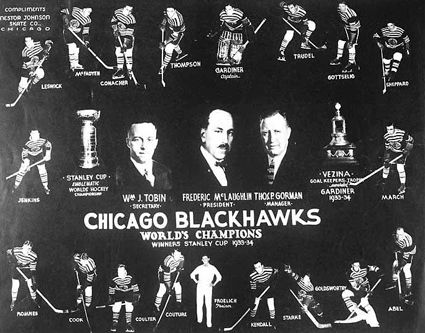
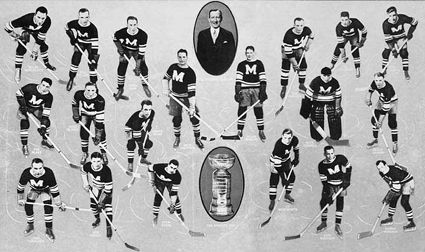
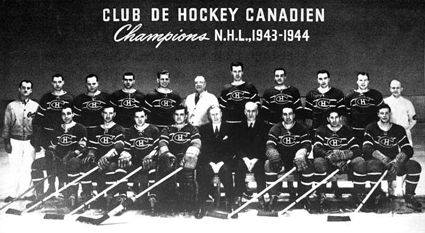
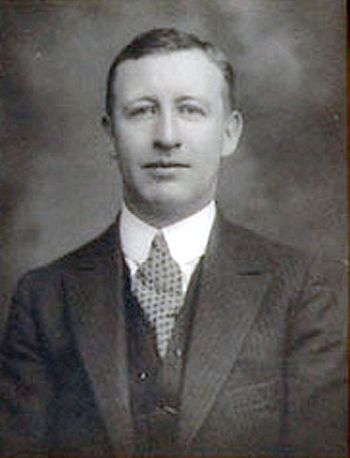
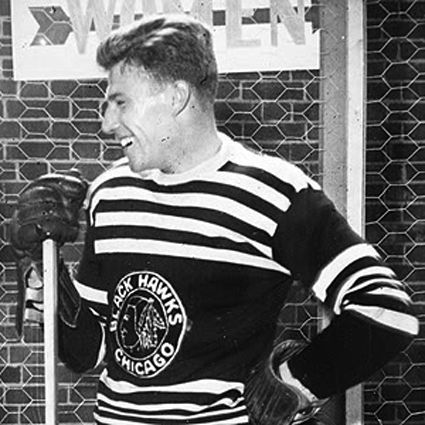










No comments:
Post a Comment
We welcome and encourage genuine comments and corrections from our readers. Please no spam. It will not be approved and never seen.